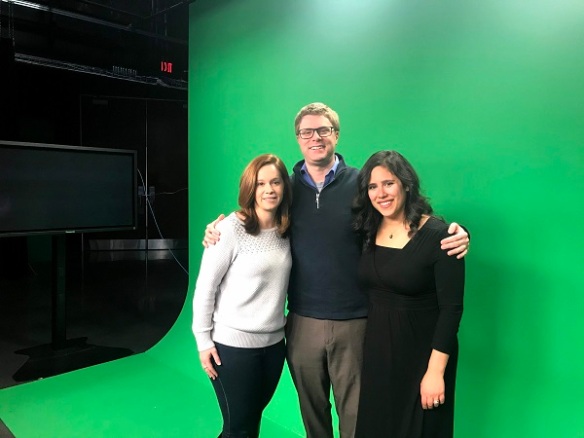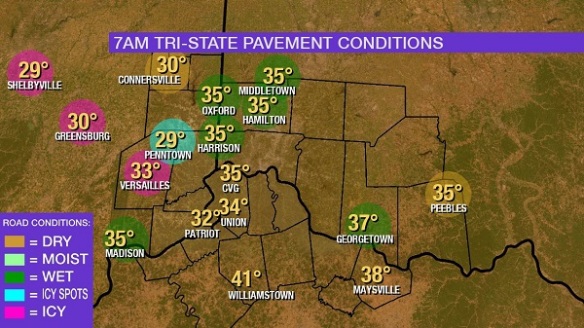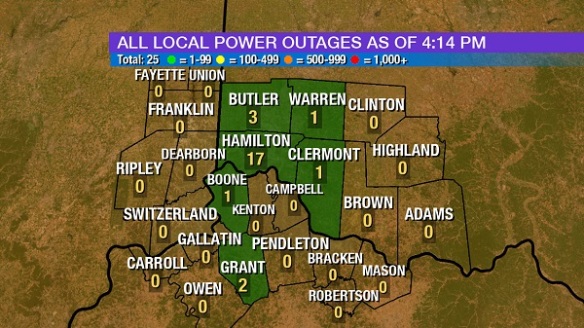Just over 2 years ago, I left my career as a broadcast meteorologist behind with an MBA in hand and a new career path in business intelligence beginning. I’ve found success in my second career, but – as you might expect – I still love the weather. Indeed, myself and everyone I know said I did the right thing by leaving where I was to go where I am now…but there’s still that love for meteorology that lingers within you…and you still wish things had worked out in weather.
When I finished up my MBA at Xavier in the summer of 2017, I suddenly found myself with a lot of free time. I was likely to leave broadcast meteorology by the end of the year, so starting projects at my current employer wasn’t the right choice. What should I do with all of this free time? How can I stay involved in weather? And then a path opened up.

Insert Kirstie Zontini – pictured above at the right. She’s a meteorologist at WHIO-TV in Dayton, Ohio. I’ve respected WHIO for a few years, especially given their history of hiring degreed meteorologists and having their meteorologists be certified by the American Meteorological Society. McCall Vrydaghs, pictured above at the left, is the chief meteorologist at WHIO. I had the chance to meet both of them just over a week ago after several months of virtual partnership.
In very late 2017, Kirstie reached out to me on Twitter with great praise for both my time in meteorology – including my graphics and the data within – and my success with getting an MBA. I was quite flattered and appreciated her comments…but the conversation about my career transitions eventually turned to a conversation about how I was creating social media graphics and finding the data often used within them, including these pavement conditions and power outage maps:


Now the dots start connecting: perhaps there’s a path to working with Kirstie that brings some of our ideas to a platform where hundreds of thousands of people can see it. After all and keeping myself humble, my social media pages have a small fraction of the reach that a station like WHIO-TV has.
At first, I tried a “simple” programming route with Kirstie; maybe we can pull some data already on the Internet and let the on-air weather graphics machine do the heavy lifting. Well, that didn’t work…so it was time to move onto the advanced topics. Kirstie’s a great broadcast meteorologist, but – and even she will admit this – she’s not a computer programmer. The next step was to get resources, and Kirstie did just that after connecting with engineers and the IT department; this was no easy feat, and from my side of the fence this was a clear indication that she was passionate and dedicated to tackling some these weather projects.
Once we had resources, it was time for me to use computer programming to pull, clean, and process weather data that WHIO wanted. My first project was to pull Ohio Department of Transportation and Indiana Department of Transportation pavement temperature and wetness data. I found a way to pull the data, and Kirstie got the data into her weather graphics machine and built the graphic (formatting, colors, and all). Here’s the latest version of Kirstie’s graphic:
Be careful this morning. Most roads are looking dry but pavement temperatures are in the 20s and a few north of I-70 are showing some ice. https://t.co/uzrVmwmQ2F pic.twitter.com/EKIt5q8coX
— Kirstie Zontini (@KirstieZontini) December 18, 2019
Next up: power outages. We started this in early 2019. Once again, I pulled the data from Duke Energy, DP&L, and Ohio Edison…and Kirstie did the data importing and graphic building. Kirstie had to color-code all of these counties one by one and for each outage category!
Here is an updated look at power outages across the Miami Valley. More information: https://t.co/Sbv7LbDhk9 pic.twitter.com/fEABKhXo7s
— Storm Center 7 (@StormCenter7) December 21, 2019
Ironically, Kirstie and I had completed this map and the automation behind it prior to the Miami Valley Memorial Day tornado outbreak in late May. While immediate attention went to the loss of life and property, the attention after those concerns goes to “when am I going to get my power back?” WHIO used the fruits of our programming labor immediately after the tornadoes:
Still almost 60K without power as we head towards 10AM! https://t.co/uzrVmwmQ2F pic.twitter.com/agRn2TQ4Vm
— Kirstie Zontini (@KirstieZontini) May 28, 2019
That’s a powerful weather story following a tornado. Seeing this is like being a coach on the sidelines and watching the players on the field succeed. I may have retired from broadcast meteorologist, but it makes me happy to know I still have a stake in the game.
Kirstie and I have also automated a lot of behind-the-scenes processes, including automated river, UV index, and air quality forecasts just to name a few. We’ll be working together in the coming months to make additional data-driven graphics.
So why did I do this?
I still love the weather. When I left meteorology, I had a lot of “gas in the tank” and ideas; why let those go to waste? If someone wants to learn something you’re passionate about, why not support them and mentor them? If you have a chance for a partnership, why not take that chance to do something great? Perhaps most importantly, why sit on my ideas and knowledge when it can be used by others to help others – and in extreme cases – help keep people safe? Didn’t I make that commitment to the community as a meteorologist…and especially after tackling an ethics-based MBA?
I’m thankful for my partnership with WHIO, and I’m thankful to still be involved in meteorology…even if I’m cheering from the stands.
As part of this initiative, I came on McCall and Kirstie’s podcast – “Cloudy with a Chance of Podcast” – recently. Hear more about our partnership, changing, and my transition from broadcast meteorology to the business world here:
•WHIO On-Demand page: bit.ly/2GxtQWg
•iTunes: apple.co/2Gxu4g4
•Stitcher: bit.ly/2sJ4CCt
•Google Play: bit.ly/2BGOwMl
